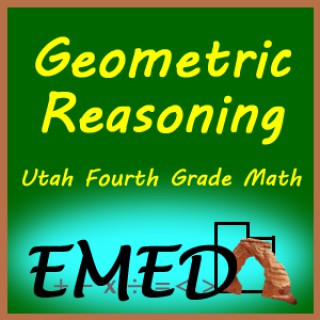
Algebraic Reasoning
Follow Algebraic ReasoningThis is a feed of pages for Algebraic Reasoning
- May 17, 2011 LATEST EPISODE
- infrequent NEW EPISODES
- 20 EPISODES
More podcasts from EMED
Latest episodes from Algebraic Reasoning

b. Recognize that a symbol represents the same number throughout an equation or expression (e.g., Δ + Δ = 8; thus, Δ = 4).

d. Describe and use the commutative, associative, distributive, and identity properties of addition and multiplication, and the zero property of multiplication.

d. Describe and use the commutative, associative, distributive, and identity properties of addition and multiplication, and the zero property of multiplication.

d. Describe and use the commutative, associative, distributive, and identity properties of addition and multiplication, and the zero property of multiplication.

d. Describe and use the commutative, associative, distributive, and identity properties of addition and multiplication, and the zero property of multiplication.

2.2d Use algebraic expressions, symbols, and properties of the operations to represent, simplify, and solve mathematical equations and inequalities.
Describe and use the commutative, associative, distributive, and identity properties of addition and multiplication, and the zero property of multiplication.

2.2d Use algebraic expressions, symbols, and properties of the operations to represent, simplify, and solve mathematical equations and inequalities.
Describe and use the commutative, associative, distributive, and identity properties of addition and multiplication, and the zero property of multiplication.

b. Recognize that a symbol represents the same number throughout an equation or expression (e.g., Δ + Δ = 8; thus, Δ = 4).

Recognize that a symbol represents the same number throughout an equation or expression (e.g., Δ + Δ = 8; thus, Δ = 4).

b. Recognize that a symbol represents the same number throughout an equation or expression (e.g., Δ + Δ = 8; thus, Δ = 4).

a. Use the order of operations to evaluate, simplify, and compare mathematical expressions involving the four operations, parentheses, and the symbols , and = (e.g., 2x (4 - 1) + 3; of the two quantities 7 - (3 - 2) or (7 - 3) - 2, which is greater?). b. Express single-operation problem situations as equations and solve the equation.

a. Use the order of operations to evaluate, simplify, and compare mathematical expressions involving the four operations, parentheses, and the symbols , and = (e.g., 2x (4 - 1) + 3; of the two quantities 7 - (3 - 2) or (7 - 3) - 2, which is greater?). b. Express single-operation problem situations as equations and solve the equation.

b. Recognize, represent, and extend simple patterns involving multiples and other number patterns (e.g., square numbers) using objects, pictures, numbers, and tables.

b. Recognize, represent, and extend simple patterns involving multiples and other number patterns (e.g., square numbers) using objects, pictures, numbers, and tables.

c. Describe and use the commutative, associative, distributive, and identity properties of addition and multiplication, and the zero property of multiplication.

a. Analyze growing patterns using objects, pictures, numbers, and tables to determine a rule for the pattern.

a. Analyze growing patterns using objects, pictures, numbers, and tables to determine a rule for the pattern.

b. Recognize that a symbol represents the same number throughout an equation or expression (e.g., Δ + Δ = 8; thus, Δ = 4).

c. Describe and use the commutative, associative, distributive, and identity properties of addition and multiplication, and the zero property of multiplication.

a. Use the order of operations to evaluate, simplify, and compare mathematical expressions involving the four operations, parentheses, and the symbols , and = (e.g., 2x (4 - 1) + 3; of the two quantities 7 - (3 - 2) or (7 - 3) - 2, which is greater?). b. Express single-operation problem situations as equations and solve the equation.












